In the digital world, keyword optimization is key to making your website more visible online. A smart keyword strategy helps bring in the right visitors. It matches your content with what they’re searching for. Grasping keyword optimization is vital for anyone aiming to enhance their SEO and attract more visitors naturally.
Key Takeaways
- Keyword optimization is vital for increasing search engine visibility.
- A strong keyword strategy connects with the target audience.
- Effective keyword selection enhances website traffic.
- Aligning keywords with search intent is crucial for SEO success.
- Ongoing keyword optimization is essential to stay relevant.
Understanding Keyword Optimization
Keyword optimization is key in SEO. It’s about choosing words people search for to drive web traffic. This includes knowing both long-tail and short-tail keywords.
Where you place and how often you use keywords matters for search rankings. A good mix of keywords reaches more people. Websites can then meet the various needs of users, boosting their presence online.
Right keyword use links content to search needs well. It’s about watching keyword competition and search trends. This way, strategies can tap into what users are currently interested in.
| Keyword Type | Characteristics | Example |
|---|---|---|
| Short-Tail Keywords | Highly competitive, broad focus, low specificity | Shoes |
| Long-Tail Keywords | Less competitive, more specific, higher conversion rates | Women’s running shoes for flat feet |
| Geo-Targeted Keywords | Focus on specific locations, appeals to local searches | Best pizza in New York |
| LSI Keywords | Related terms that help enhance content relevance | Footwear, sneakers, athletic shoes |
Knowing keyword optimization leads to top search rankings and more visitors. It lays the groundwork for making content that really speaks to people.
The Importance of Keyword Research
Keyword research is key for a strong 구글 seo strategy. It boosts your online presence. You can find keywords that attract your audience using keyword research tools. These tools ensure keywords align with what users are searching for.
Tools for Effective Keyword Research
Several tools help with keyword research:
- Google Keyword Planner: Find industry-related keywords and their search volumes.
- SEMrush: Provides tools for exploring keywords and analyzing competitors.
- Ahrefs: Offers detailed backlink analysis and keyword discovery.
These resources can uncover popular keywords. This boosts your site’s visibility.
Identifying Your Target Audience
Knowing your audience is vital for keyword research. Understand their interests and how they search to build a successful SEO plan. Consider these aspects:
- Demographics: Includes age, gender, location, and job.
- Interests: What topics or products excite them.
- Search Behavior: The way they search online, including phrases they prefer.
Choose keywords that meet your audience’s needs. This leads to content that engages users and boosts conversions.
| Tool | Features | Best For |
|---|---|---|
| Google Keyword Planner | Search volume, competition analysis | Keyword planning and PPC campaigns |
| SEMrush | Keyword tracking, backlink overview | Comprehensive SEO audits |
| Ahrefs | SEO analytics, competitor keywords | Deep backlink analysis |
On-Page SEO and Keyword Optimization
Effective keyword optimization is key for on-page SEO. By smoothly integrating keywords in your content, you improve both its readability and its relevance. This part talks about fitting keywords into your text and why it’s good to optimize meta tags and descriptions.
Incorporating Keywords into Content
Using keywords well in your content helps with SEO. Here are some tips for making your content optimized:
- Keyword Placement: Mix keywords in headings, subheadings, and the main text naturally.
- Diversity: Use related words and phrases to add context without overdoing it.
- Content Structure: Organize your content into clear sections for better readability and to keep readers interested.
Optimizing Meta Tags and Descriptions
Meta tags, like title tags and meta descriptions, are super important for on-page SEO. They should have strategic keywords to improve visibility and get more clicks.
“Optimizing your meta tags not only supports SEO rankings but also appeals directly to your audience’s search intent.”
Here’s how to make your meta tags better:
| Element | Best Practices | Benefits |
|---|---|---|
| Title Tag | Use main keywords, and keep it under 60 characters. | Boosts search engine visibility and relevance. |
| Meta Description | Write a catchy description with targeted keywords, under 160 characters. | Lifts click-through rates from search results. |
Keyword Optimization Strategies
Improving visibility in search engines needs effective keyword optimization strategies. It’s vital to know how long-tail and short-tail keywords differ. Each has a unique role in bringing traffic to your content. By focusing on these strategies, you can draw in a more specific audience.
Long-Tail Keywords vs. Short-Tail Keywords
Long-tail keywords are longer phrases, often with three or more words. They’re specific with less competition which usually boosts conversion rates. This is because users search these terms when they’re close to buying. In contrast, short-tail keywords are broader, with one or two words. Though they attract more traffic, their conversion rates aren’t as high due to their generality.
The table below outlines the key differences between long-tail and short-tail keywords:
| Aspect | Long-Tail Keywords | Short-Tail Keywords |
|---|---|---|
| Competition | Lower | Higher |
| Search Volume | Lower | Higher |
| Conversion Rate | Higher | Lower |
| Specificity | More Specific | Broad |
Using Keywords Naturally
Using keywords in a way that flows naturally is crucial. It keeps your content readable and relatable to your audience. Using natural language makes reading smooth and keeps search engines happy. Avoiding too many keywords keeps your writing from sounding forced or robotic. Focus on blending keywords naturally into your content. This approach increases engagement and boosts SEO.

Leveraging Semantic Search
The SEO world is changing, making semantic search key for effective content. It focuses on what users really want, helping marketers tailor their strategies precisely. This makes content more relevant, boosting both engagement and conversion rates.
Understanding User Intent
User intent is the goal behind every search. It helps marketers figure out what information people are looking for. Depending on whether a search is for navigating, learning, or buying, content can be shaped to match. For example, if someone wants answers, the content should directly respond to their questions.
The Role of Natural Language Processing
Natural language processing in SEO is crucial for analyzing user queries and web content. It allows search engines to grasp context, feels, and the subtleties of language. This boosts keyword optimization effectiveness. Using natural language processing, marketers ensure their content meets user expectations, enhancing search visibility.
| User Intent Type | Description | Content Strategy |
|---|---|---|
| Navigational | User seeks a specific website or webpage | Optimize branded keywords and provide easy navigation |
| Informational | User wants to acquire facts or answers | Create informative, detailed content that addresses common queries |
| Transactional | User intends to purchase a product or service | Incorporate persuasive calls to action and optimize for product keywords |
Latent Semantic Indexing Explained
Latent semantic indexing (LSI) is a game-changer for search engines. It helps them understand not just keywords but the context around them. This means they get better at finding the right results based on what users really want.
Adding semantic keywords to your content boosts your visibility in search. By using related terms, your writing becomes richer and aligns more closely with what people are looking for. Your content then matches a wider range of searches, which search engines love.
To add LSI into your SEO, here’s what to do:
- Identify semantic keywords related to your main topic.
- Spread these keywords naturally in your writing.
- Use LSI words in your meta descriptions and tags.
- Check how these changes affect your rankings.
By weaving latent semantic indexing into your work, you can make your content more powerful. This helps you reach more users and improve your standing with search engines.
| LSI Keyword | Main Keyword | Relevance |
|---|---|---|
| search intent | keyword optimization | High |
| content marketing | SEO strategies | Moderate |
| organic traffic | search engine visibility | High |
| SEO tools | keyword research | Moderate |
Applying TF-IDF for Better SEO
Understanding term frequency-inverse document frequency (TF-IDF) can truly enhance your content creation. This method looks at how important a word is in a document, compared to a bunch of documents. It helps you pick key terms that catch your audience’s attention and keep your content on point and engaging.
What is TF-IDF?
TF-IDF has two big parts. First, term frequency shows how much a term pops up in a document. The more a term appears, the more it matters for that document. The second part, inverse document frequency, measures how important a term is across all documents. A term found in many documents isn’t as special as one that’s in just a few. This makes TF-IDF a smart way to find out which words are truly key.
Utilizing TF-IDF in Your Content Strategy
When you use TF-IDF for your content strategy, you calculate scores for your keywords. This helps you:
- Identify key concepts that your content needs.
- Ensure balanced keyword use, avoiding too many repeats while keeping your message clear.
- Boost content quality by focusing on terms that mean a lot to your audience.
This approach gives you a plan. It helps your writing hit home with readers and search engines alike.
Using Language Models in SEO
Advanced language models, like GPT-3, are changing SEO for the better. They offer new ways to work with content. These models understand keywords deeply because of their smart algorithms. They look at a lot of data to help marketers create content that really speaks to people.
Marketers can use these tools to get more people to see their sites. By using language models, they can write content that attracts readers. This content matches what users are looking for. So, more people want to read it.
To make the most of these tools, having a plan is key. Organizations should think about:
- Making language models a part of how they make content.
- Using what they learn from language models to pick better keywords.
- Checking how well their content is doing, guided by these smart models.
Using the tips language models give can really boost a business’s SEO game. It can bring a lot more visitors to their websites.

Exploring Word Embeddings
Understanding word embeddings is key in SEO. These word representations in vector spaces improve contextual relevance. This knowledge helps SEO experts create content that better matches what users are searching for.
How Word Embeddings Enhance Keyword Relevance
Word embeddings offer a richer understanding of language. They capture how words relate, boosting keyword relevance. This approach goes beyond single keywords. It allows brands to craft content that truly connects with readers.
Here’s how word embeddings can enhance SEO:
- Contextual Understanding: Word embeddings find synonyms and similar phrases for richer content.
- User Intent Alignment: They help include terms that match what users are looking for, meeting search queries better.
- Content Diversity: They promote varied language use, keeping content fresh and relevant without repetition.
Using word embeddings in SEO lays a strong foundation for content optimization. It makes content more relevant and engaging, helping brands connect more deeply with their audience.
Implementing Topic Modeling
Topic modeling is a key method for improving content and making a website’s structure clear. It sorts content by themes. This helps creators and visitors alike. Knowing its benefits can really help you make your website better.
Benefits for Content Creation
Using topic modeling for making content has many pluses. Here are a few:
- Enhanced Organization: It makes finding information easy by sorting articles and posts by theme.
- Improved Quality: Ensures the tone and topic of content stays consistent, raising its overall quality.
- Increased Engagement: Creates clear paths through related content, improving the user’s experience.
Improving Website Structure with Topic Modeling
Adding topic modeling to your website can make it much better. For example:
- Intuitive Navigation: Lets users move easily through grouped content, lowering bounce rates.
- SEO Benefits: A well-organized site gets indexed better, which can improve search engine rankings.
- Content Gaps Identification: Helps you find and address topics your site is missing, guiding new content.
| Feature | Impact on Content Development | Impact on Website Optimization |
|---|---|---|
| Enhanced Organization | Organizes content into cohesive themes | Facilitates easier navigation and indexing |
| Improved Quality | Ensures consistency in messaging | Boosts overall site credibility |
| Increased Engagement | Encourages users to explore more content | Leads to longer session durations |
Conducting Effective Text Analysis
Text analysis is key in checking if content works well. It helps creators decide on the best strategies. This involves looking closely at content parts. It makes sure every bit connects with the right audience.
To start analyzing text well, focus on SEO metrics first. Check things like keyword use, how many people visit, and if they stay on the page. Seeing how keywords do helps tweak plans to match what users like.
- Measure Readability: Tools like Flesch-Kincaid can gauge the readability of your content, helping to identify areas for simplification.
- Engagement Metrics: Track user interaction through comments, shares, and time spent on the page to assess how compelling the content is.
- Keyword Performance: Regularly review the success of chosen keywords and adjust them according to trends and shifts in audience behavior.
Keeping an eye on content assessment helps texts stay up-to-date. Rechecking the analysis often lets creators fine-tune their work. This matches SEO’s changing demands. Taking steps early keeps digital content valuable and easy to find.
Conclusion
This article talked about the complex world of keyword optimization. We learned how crucial it is for SEO success. We saw the need for deep research on keywords, smart on-page tactics, and adapting to new trends in search engines. These steps can really boost how visible and relevant your site is.
To stay on top of the game in the digital world, you must keep up with SEO tips from this guide. Keep your keyword strategies fresh, dive into semantic search, and use advanced tools. Being open to change and new trends is the secret to ongoing success.
Looking ahead, we can see SEO strategies will keep changing because of new technologies and what users like. By being proactive and applying what this article shared, you’re setting yourself up for success. You’ll ensure your content continues to capture your audience’s attention and make an impact.










